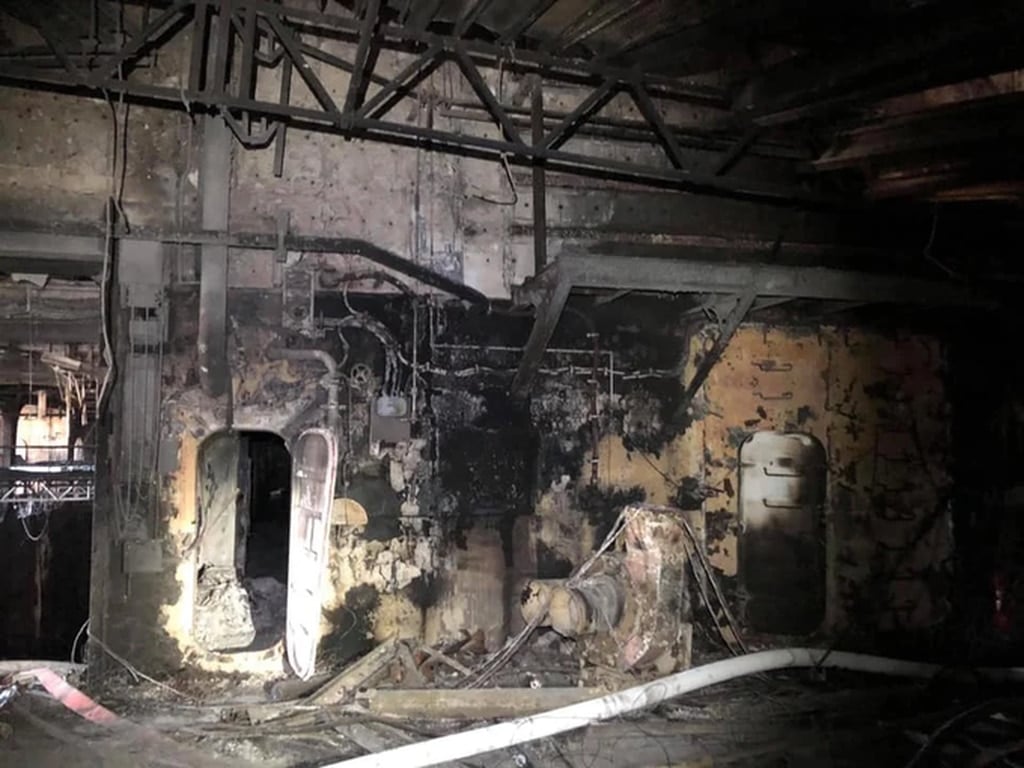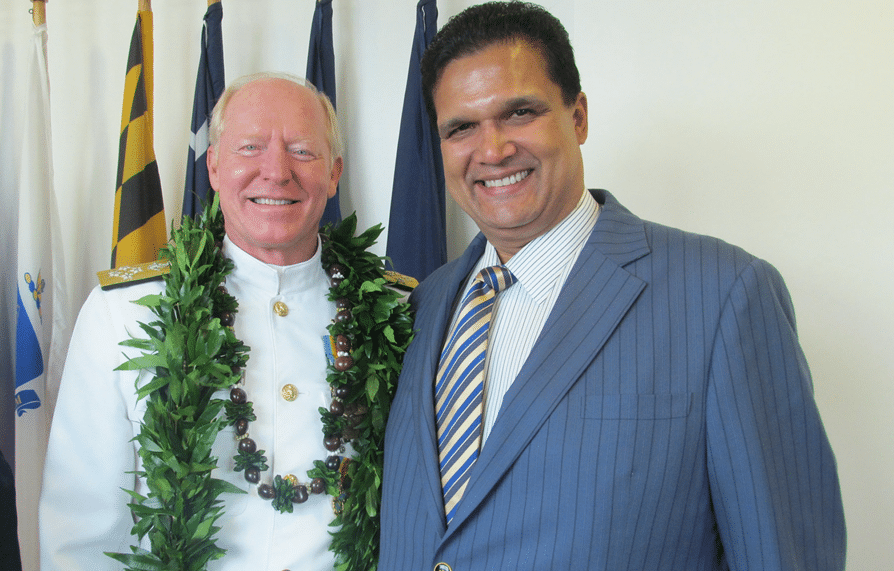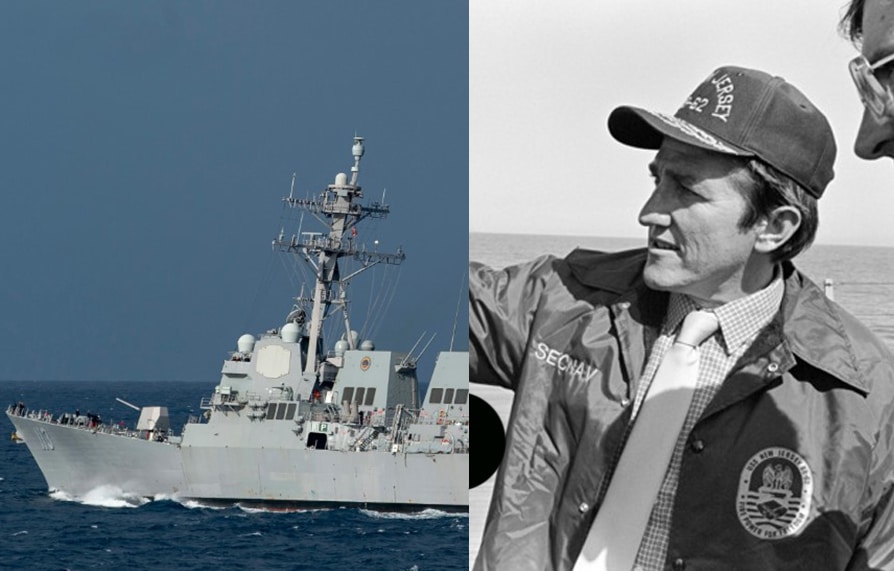Blog / Military News
Trial of Former SEAL Washout Accused of Burning Down the USS Bonhomme Richard Begins in San Diego
Share this story
Share this story
The last time I talked about a military-related trial, it was going over the raunchy details of the “Fat Leonard” trial, which you can read all about right here. (Hilariously, thanks to the bumbling of the Federal agency Pretrial Services, this lumbering, obese man casually sliced off his ankle monitor and escaped the country after the “guilty” verdicts came in.) That particular case seemed pretty black and white, as there were vast paper trails showing the tremendous amounts of cash, food, and prostitutes enjoyed by a wide variety of Navy personnel, from contract specialists to Admirals.
But this new trial is far from black and white. This would be the trial of Navy Seaman Apprentice Ryan Sawyer Mays, charged with aggravated arson and willful hazarding of a vessel in the infamous burning of the US Navy’s amphibious assault ship, the USS Bonhomme Richard. The court-martial begins this week, and, despite an exhaustive investigation, it is far from clear whether the Navy will be able to successfully prosecute the accused. Before we get into the weakness of the case, let’s recall some of the details of what happened that day.

The Bonhomme Richard was docked in San Diego on Sunday, July 12, 2020, undergoing routine maintenance. According to the timeline that the investigation provided, around 0800 hours, a sailor walking by noticed what he described as “fog” emanating from one of the lower decks, the Lower Vehicle storage area. Since there was no smell of smoke, the sailor resumed walking without raising and alarm. A little over 10 minutes later, several other sailors saw smoke coming out of the same deck, and reported the smoke to the Officer of the Deck. That officer failed to sound the general alarm, later explaining to investigators that he had been taught early in his career to never sound a general fire alarm unless he had put “eyes on” the actual fire. The crew on board then notified the Duty Fire Marshall around five minutes later that they had smoke coming out of the “Lower V” deck, and shortly after, the officer on duty finally sounded the main alarms. Eventually, 24 minutes after the first sighting of smoke, the commanding officer, Captain Gregory Thoroman, was notified via text message that there was a fire on board the ship.
Meanwhile, the fire continued to burn. One of the major problems found in the after-action report (you can read the entire AAR right here) was that the ship’s on-board fire fighting system had been disabled because the ship was docked for maintenance. Sailors have been fearful of fire on ships since there have been sailors AND ships, and, since fires are not uncommon aboard ships, fire prevention systems are a huge area of concern for the Navy. One has to imagine that if the system, known as an Aqueous Film Forming Foam (AFFF) HAD been available, the fire would have been quickly extinguished in its infancy. You can see the impressive ability of the AFFF demonstrated in this video:
Impressive! However, according to policy, the Bonhomme Richard was only required to have the AFFF fully online and operational when loaded with more than 900,000 gallons of fuel. Being in a state of docked maintenance, it was not. It did have a limited portion of the system available, but even that limited amount would be useless, as, believing the fire was an electrical fire, the ship’s Executive Officer had turned off the electrical power of the ship.
Therefore, the only fire-fighting materials available were hand-held fire extinguishers, external water supplies, and external firefighters. And, speaking of firefighters, the first ones to arrive on scene were Federal firefighters, around 0830. But they ran into another problem: There was no fire station on the pier of the ship’s dock, and there was no main fire system pipe to easily attach hoses. This led to the Federal firefighters scrambling around connecting hundreds of yard of hoses while the fire continue to build. Additionally, the fed FFs had no idea where the fire was located, and had no direction in how to get there once they WERE told where it was located. To add to the clusterfuck, even more firefighters from San Diego fire showed up to the dock. Apparently the boys were rarin’ to go, but 1.) Had no idea where to go and 2.) Were promptly told to leave by the federal firefighters!
Luckily, my SD guys stuck around. But by the time they figured out where to go, the temperatures in Lower V were fast approaching 500 degrees. The San Diego guys did manage to start putting water to flame at 0951, almost two hours after the first visual of smoke. That was the first time any flame retardant had been put to the fire.
And you know the rest of the story. The Bonhomme Richard burned in the San Diego harbor for five days, with temperatures in some sections reaching over 1,200 degrees Fahrenheit. It got so hot that the fire actually melted some of the ship’s infrastructure, creating a molten steel lava that flowed into other sections of the ship. Nearly 400 sailors, both from the Bonhomme Richard and other nearby ships battled the blaze. More than 60 sailors had to be medically treated for smoke inhalation, burns, and other assorted injuries. The ship itself sustained damage to 11 of 14 decks, and after learning that the bill to repair the ship would be multiple billions of dollars and take 5-7 years to repair, the Navy scrapped the entire vessel at an estimated cost of 1.2 billion dollars.
The fallout from the incompetence and miscommunication was severe: Over 20 sailors were disciplined for everything from failure to enforce training standards to lack of oversight, including the top 3 commanding officers for the Bonhomme Richard and at least one admiral. This was perhaps the least surprising aspect, seeing as how admirals, captains, and commanders were literally arguing with each other over the phone about who had jurisdiction over the vessel. If you care to read about the bickering between the officers in greater detail, Defense News has a very detailed write up you can find here.

As for the case itself against 21 year old Seaman Ryan Mays? In a word: thin. The Navy is seeking to paint Mays as a disgruntled sailor, pointing out that as a former SEAL washout, he was bitter, unmotivated, and had no interest in working the deck in Big Navy. But the big problem is they have ZERO physical evidence against Mays, and he has been steadfast in denying he had anything to do with it. As a matter of fact, a Navy judge originally recommended the case not go to a court martial trial over lack of said evidence. However, that judge was overruled by the former commander of the 3rd fleet, Vice Admiral Steve Koehler, so here we are.
The prosecution has made it clear they believe the fire was arson, caused by someone using an open flame to combustible material, and then adding some sort of accelerant like gasoline or paint thinner. The Navy’s star witness is Petty Officer Third Class Kenji Velasco, who will testify that he saw Mays going down into the Lower V deck right before the fire broke out. However Velasco, when questioned by NCIS after the fire, changed his story several times. He now blames that on nervousness, perhaps understandable due to the traumatic events he had just witnessed. Keep in mind that this fire happened at the height of the Covid-19 mask mania, so whoever Velasco saw would have been wearing a mask and perhaps a hat, making a positive ID challenging. He is the sole witness who said he saw Mays at that particular time. Then there was this:
Another sailor who escorted Mays to the brig after he was arrested alleged Mays admitted to setting the fire, though Haggerty contended Mays always maintained his innocence. The defense attorney claimed Mays said, “If I’m going to the brig, I guess I did it,” and that investigators were using the statement against Mays “while ignoring the obvious sarcastic nature and context.”
It gets even more convoluted. The defense team for Mays says that the Navy, in a rush to find someone, anyone for causing the disaster, is ignoring another sailor (since discharged from the Navy in a regular manner) who is a more likely suspect:
The attorney said this sailor, who was also disgruntled with the Navy, made internet searches just prior to the Bonhomme Richard blaze regarding “fire color heat scale” and could be linked to graffiti scrawled in portable toilets on and near the ship that read, “I did it. I set the ship on fire. (Expletive) the ship. 1 down, 3 to go.”
There is no word yet on whether or not the defense will attempt to track down that sailor, who remains unnamed in everything I could find so far, much less whether that person would cooperate. Since that person is no longer in the Navy, the branch has no jurisdiction over him and cannot compel him to come forward. Which, since that person would be admitting to causing the billion-dollar blaze, seems unlikely. Mays, meanwhile, has waived his right to a trial by jury and instead will learn his fate through the court-martial judge.
So? Is this indeed the work of a disgruntled and angry BUDs dropout who wanted to get revenge on the Navy that he felt wronged him? Simply an attention-getting cry for help? Or did the upper echelons of the US Navy, knowing that they had failed horribly in their extremely basic duty to prevent fires on a ship, try and pin blame on a low-ranking, unsympathetic scapegoat? We should know the answer in a couple of weeks.
Share this story
Share This Story, Choose Your Platform!








Leave A Comment